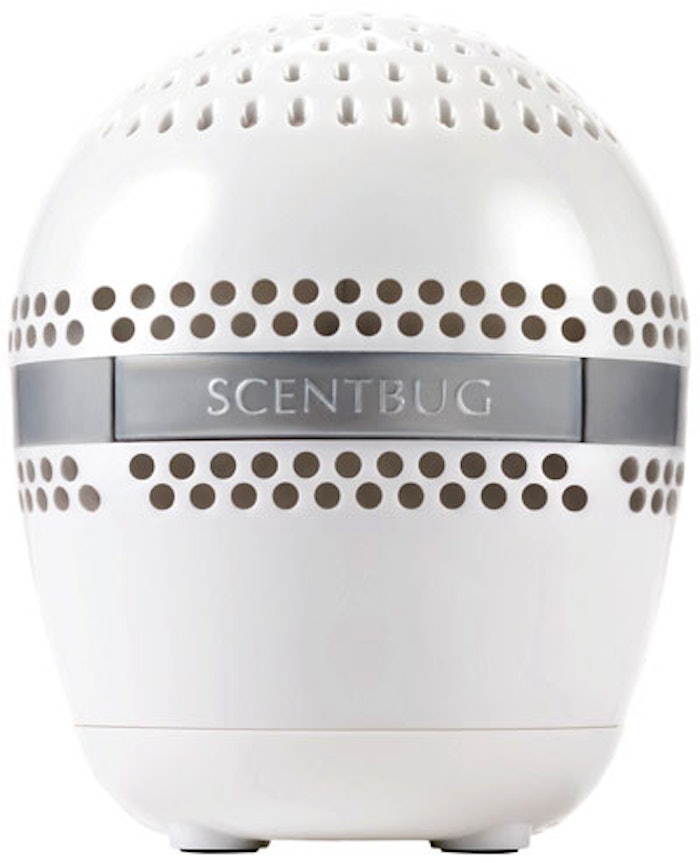
- New biopolymers allow a move from dependence on petroleum-based polymers; the industry needs to look at how it can more fully implement these materials.
- The change from traditional polymers to biopolymers requires a significant amount of compatibility testing, and would potentially require new UL testing as well for some products.
- The sooner new materials are more fully integrated and commercialized, the sooner the economics will equalize.
- There may need to be a mentality shift on the side of design with the use of this postconsumer material.
The home fragrance industry is in a spectacular place in time to utilize new technologies in the creation of earth-friendly products that are kind to the planet yet remain performance-focused. In the current age of advanced material science, the greening and recycling of the globe, and new engineering technologies, solutions exist, in fact, for creating air care products that are both earth-friendly and highly effective. The resources are available and opportunities abound to create these products, particularly where plastics and electronics—both of which are utilized for a number of home fragrance products—are involved. The questions remain of whether these solutions are fiscally feasible, manufacturing-tolerable and capable of meeting the sustained volume requirements of today’s consumer goods manufacturing environment?
Brands and manufacturers have the broadest range ever of new materials to select from when creating or recreating products. Whether looking at the materials used to make actual air care products, or materials used to make the housings for the latest electric-based devices, the material selection pallet has never been more broad or more earth-friendly. New polymer materials are available that allow the move from polyvinyl chloride (PVC) as a primary carrier for fragrance in novelty air fresheners to materials free of chlorine. From a sustainability perspective, as well as a toxicity perspective, these materials are timely—if not a bit behind the curve. Many major retailers have pursued a ban on PVC in packaging, yet they still have not seemingly approached this topic pertaining to the material used to make novelty air fresheners from major air freshener manufacturers. As these new materials are available, focused effort is also needed on pursuing earth-friendly solutions for making the actual products in the package, complementing the packaging material.
Casing Materials
New biopolymers made from corn, potatoes and even algae allow a move from dependence on polymers based on petroleum for a wide range of products. From both a product development and design perspective, the industry needs to look at how it can implement non-petroleum based materials into new and existing products—despite traditional polymers currently being more cost-effective.
Today, for example, the ever-growing market segment of electric plug-in and table-top air care devices is largely comprised of devices manufactured completely of petroleum-based polymer. More often than not, these products are made using pure or virgin resin. However, materials available today can allow these products to be made utilizing biopolymer-based materials, to varying degrees. In addition to utilizing new biopolymers for these products, the opportunity for utilization of postconsumer waste streams of resin is an opportunity for both brands to pursue a green initiative and realize a cost savings.
Changes in material will not necessarily be easy. The change from traditional polymers to biopolymers requires a significant amount of compatibility testing, and would also, potentially, require new UL testing for some products. If the commitment is made to take this step, however, utilizing these new biopolymers would allow the opportunity to eliminate all or part of the dependence on many of the petroleum-based polymers that are currently utilized. And the sooner these new materials are more fully integrated and commercialized, the sooner the economics of these new materials will equalize with the petroleum-based polymers currently dominating the market. Additionally, current materials handling allows for an effective stream of postconsumer polymers. These postconsumer polymers can be handled with minimal challenge, often being handled with no change from the virgin resins currently used—though there may need to be a mentality shift on the side of design with the use of this postconsumer material. Focus may need to shift from simply making a product bright white, and opening design direction up to the use of materials that are not always 100% white in nature—typical of postconsumer materials streams.
The Electronics
Beyond materials selection allowing the creation of a green product, the evolution of computer chip programming and the ongoing cost reduction of these components makes it possible to integrate advanced components and programming into home air care devices, and is not as expensive as it sounds. The use of advanced electrical components and programming in these devices can allow for the control of electric air care devices on predetermined settings—established either by the manufacturer or by the consumer or through means such as motion or light. Glade, for example, has done and excellent job of integrating a motion sensor into its Sense & Spray Automatic Freshener “smart unit.” This is a very good step by a brand to integrate technologies such as motion sensors that have come down in cost.
Taking the implementation of electric component technologies a bit further, the integration of a timer circuit into a plug of an air freshener allows devices to turn on and off in a defined setting toward eliminating waste of electricity and fragrance components used in the devices. In fact, many plug-in devices with a constant on setting fragrance a space at all times rather than when the consumer is home to appreciate the fragrance.
Though these changes are good for the planet and good for consumers’ wallets, adding timer circuits is not necessarily the most advantageous way for a brand to make money on refills—yet, these approaches, acknowledging consumers’ need and desire for a product that considers both consumer resources and has less impact on global resources, does pay dividends in brand equity. Brands that focus on products that are both earth- and wallet-friendly will no doubt be a trend that grows. Slatkin & Co., for example, has acknowledged this consumer need for eco-responsibility and frugality while not sacrificing anything on performance in the creation the new Scentbug product (available through Bath & Body Works)—a non-heated air freshener based on a fan system that effectively delivers fragrance into the air. The device is designed to use available Slatkin & Co. home fragrance oils, allowing consumers to use as little or as much fragrance oil as they like and giving them control of both their fragrance experience and their spending.
Will consumers pay for these added features and products made from new green materials? Just try finding a Scentbug in Bath & Body Works. While researching this feature, four of five stores visited were sold out—though promised more were on the way—demonstrating a clear expression of consumer demand.
Will brands embrace the use of these materials and components that will help to drive the cost of implementation down? These are questions yet to be fully answered. The materials and technologies are available now to make green air freshener devices that provide top fragrance performance. Product developers and manufacturers need to continue embracing these new technologies, while brands need to ask for these technologies and continue to offer them to consumers.
Eric Albee is president of Aromatic Fusion, Inc., a company focused on developing advanced fragrance delivery technologies and providing full turnkey product development, engineering and manufacturing.










